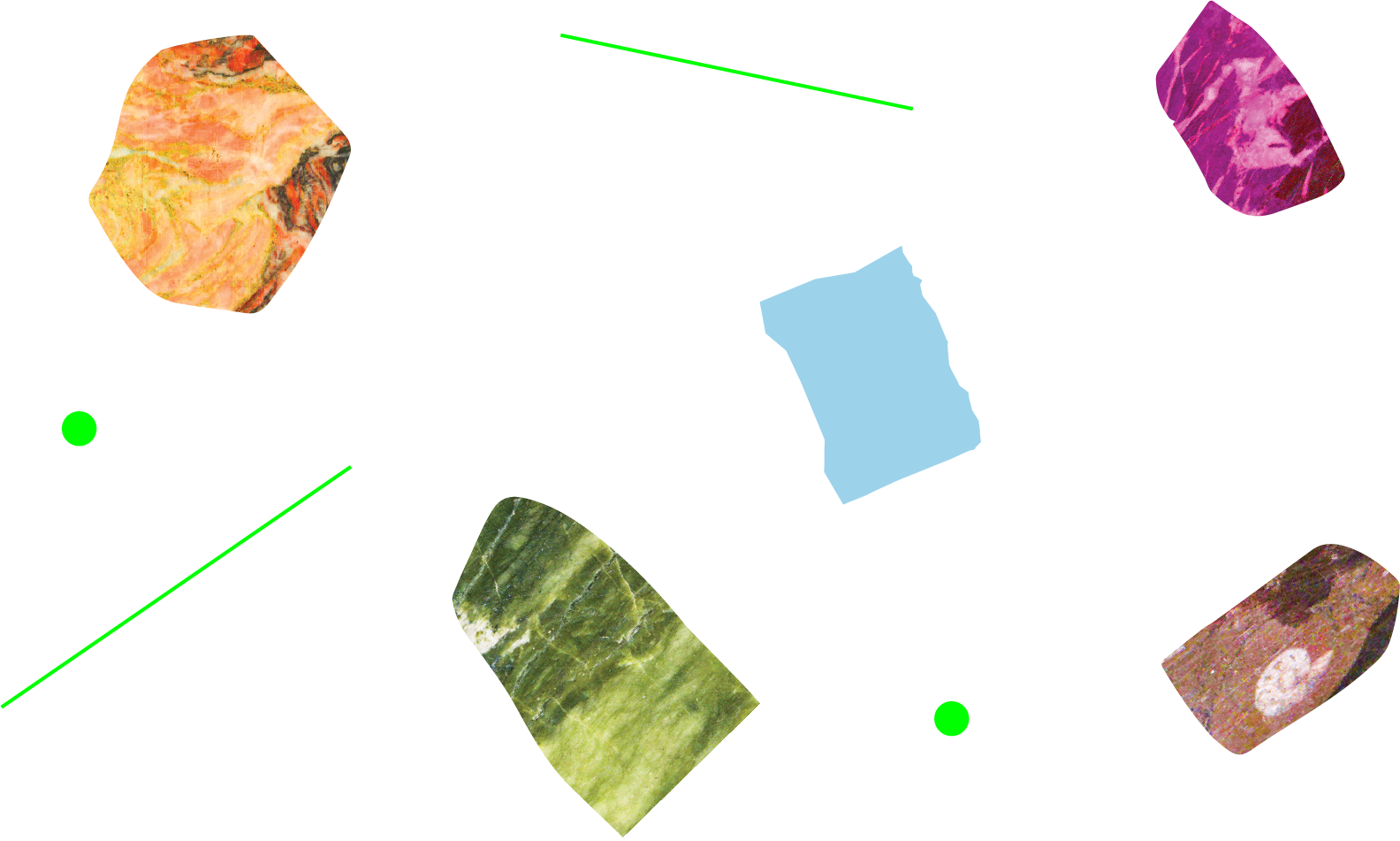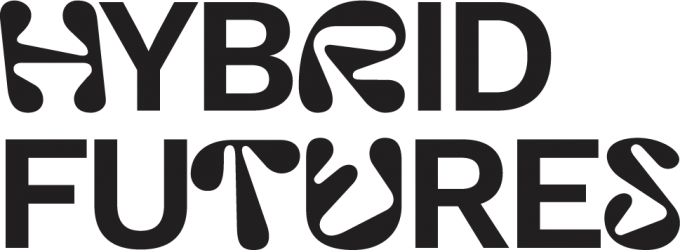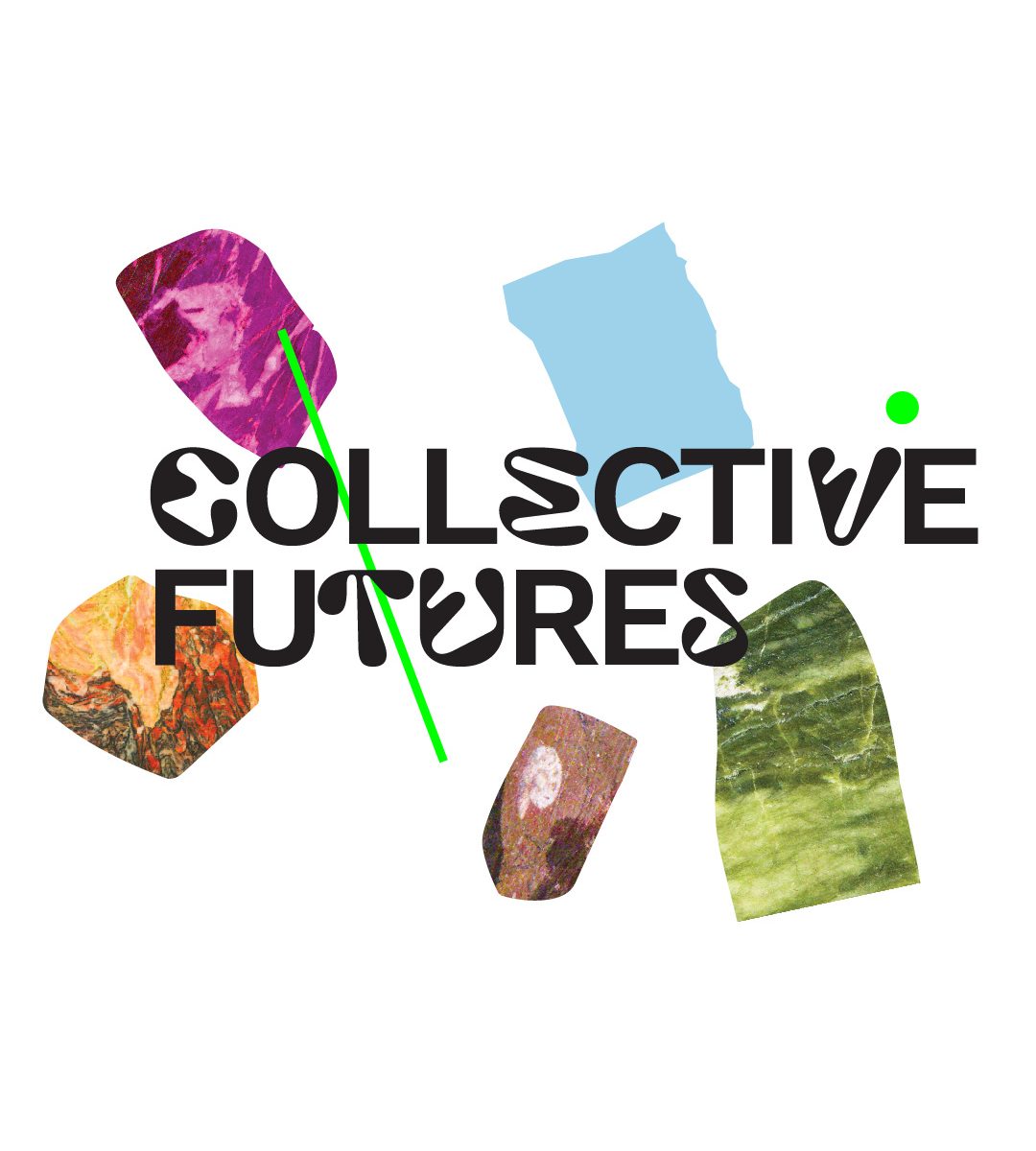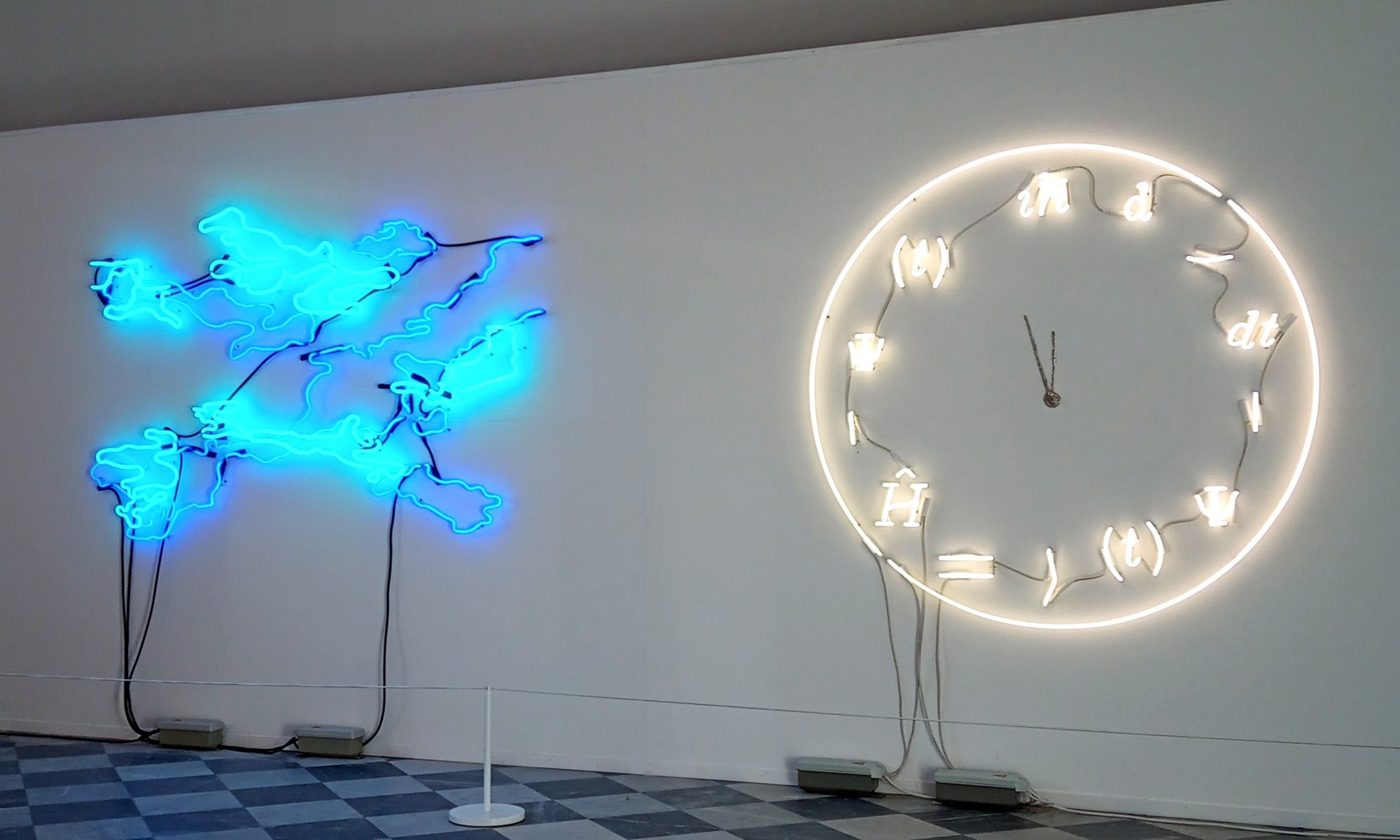This online session focused on the roles we can play to support or build projects or change. We used a metaphor of the scaffold to draw out and better understand the roles different people in Collective Futures naturally lean into – some people have ideas they want to run with, some want to support. Find out more here.
Collective Futures: Reflections Session 10 Creative Lab – online
We used the session to understand first-hand from the collective what we needed from our final session on 16 March and to learn more about one participant’s application to an Arts Climate Acceleration Programme off the back of their Christmas homework.
Our session focused on the roles we can play to support or build projects or change. We used a metaphor of the scaffold to draw out and better understand the roles different people in the Collective naturally lean into – some people have ideas they want to run with, some want to support.
One of the group reassured a newer member of the collective who was feeling like he was ‘catching up’, with how she felt entering the space in June and that the space we have created is – safe and supportive – one that cultivates personal meaning leaving the professional worries of the day aside, helping to feel uplifted by the conversations.
One of the group shared an extract from the work of Céline Condorelli, from Support Structures by Céline Condorelli, Gavin Wade, and James Langdon:
“Everything starts from this intuition: that what I define as support structures can release potential, and that support is not to be reduced to a reactive, symptomatic, and redeeming gesture, but through its uttering we may be able to hear the unspoken, the unsatisfied, the late and the latent, the in-process, the pre-thought, the not-yet manifest, the undeveloped, the unrecognised, the delayed, the unanswered, the unavailable, the not-deliverable, the discarded, the over-looked, the neglected, the hidden, the forgotten, the un-named, the unpaid, the missing, the longing, the invisible, the unseen, the behind-the-scene, the disappeared, the concealed, the unwanted, the dormant.”
Collective Futures Sessions 8 & 9
In 2023, Collective Futures focused on hearing from invited guests. We received and considered the work of artists and community activists and began to share our personal interpretation of what we are experiencing. Reflection has been a part of our sense-making; combining facts, feelings, interpretations and deciding what all of that means. Explore more here.
Collective Futures Session 7 – Crip Ecologies and New Contemporaries
(10min Audio)
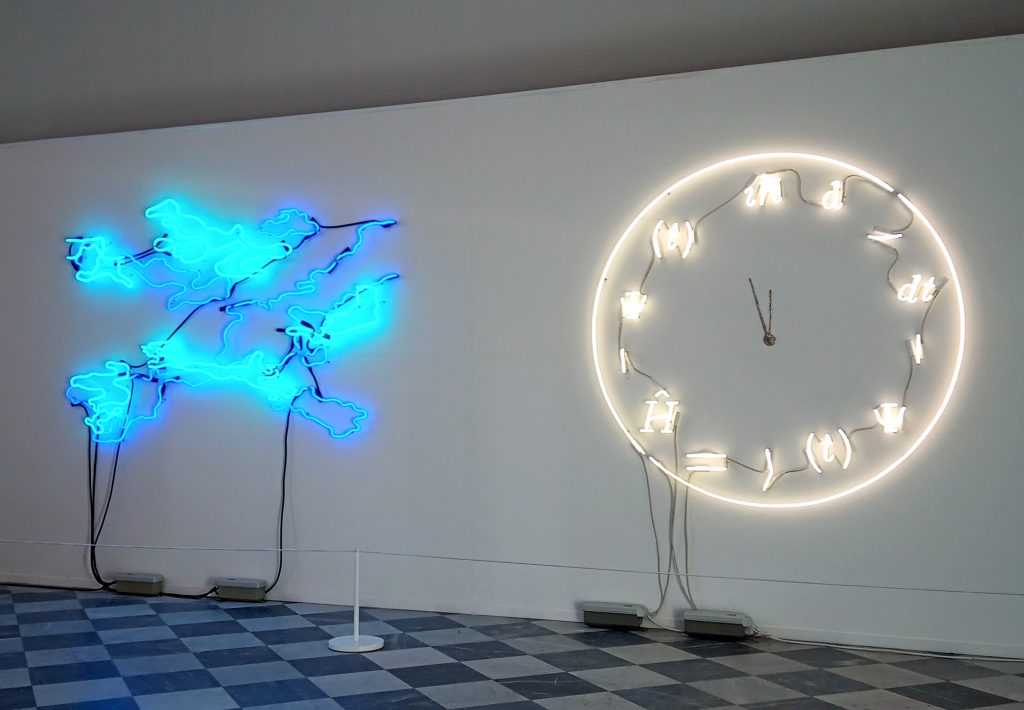
The collective met at the Grundy Art Gallery in Blackpool to view the new neon work commissioned for Hybrid Futures, RA Walden’s The Universe is a Clock (i) Schrödinger’s equation, (time dependent), 2023 and the New Contemporaries exhibition. The work of RA Walden explores Crip ecologies and non-normative readings of and relationships to time. New Contemporaries is an annual exhibition which presents the work of new graduate artists. As part of the gallery, tour the group discussed the ideas, innovations, relevance, effectiveness and voices these artists bring to the climate crisis debate.
In Blackpool library, the group took part in an exercise developed by Kit Abramson, Collective Futures’ Creative Producer and Rachel Burns, Curatorial and Community Engagement Coordinator, Touchstones with audio by RA Walden that asked the group to consider their own understandings of time. RA Walden’s work opens up questions of clock time, sick time and normative timekeeping as we occupy bodies in their varying states of health, on a planet careening toward sickness.
The collective did an exercise using metronomes – some Bakelite, some antique, large, or small, and colourful – which were laid out on a large table. The collective was each tasked to set their metronomes at the pace that they felt their body and their own embodied time was moving at that very moment. The intention was to connect as a collective, to attempt to see the ways that we are trying to share space with each other or to reach each other, when each experience time in vastly different ways. The metronomes in this exercise served as a tool to illuminate the ways that time is subjective. The collective was asked as they set their metronome to take some time to think about the ways that normative ideas of time affect their daily life. For example, how does the idea of time interact with the ideal of labour? How does our ability to imagine the future affect our ability to make change in the now, especially in relation to the climate crisis? How is time weaponised against marginalised bodies? How do our bodies fall short of the expectations of normative time? What ideas about time have I internalised that I don’t believe in? Do I feel like I have enough time? If yes, how much? If no, how little?
Once the group each found their speed and set their metronome, these were placed on the table and allowed to sit with the interrupting and interweaving beats. The group
collectively decided when everyone had had enough of listening to the cacophony of alternative times.
Discussion followed on each of our very different experience of time, reflecting back to our previous session in Salford – linking to the art collection and what we conserve, preserve, and reserve for future generations, long terms and long termism – looking for opportunity to change behaviour and make room for the ripple beyond our part in our institution or the role and influence we with have in our community.
Try the Exercise for yourself and listen to the Questions. You can download a free digital metronome too.
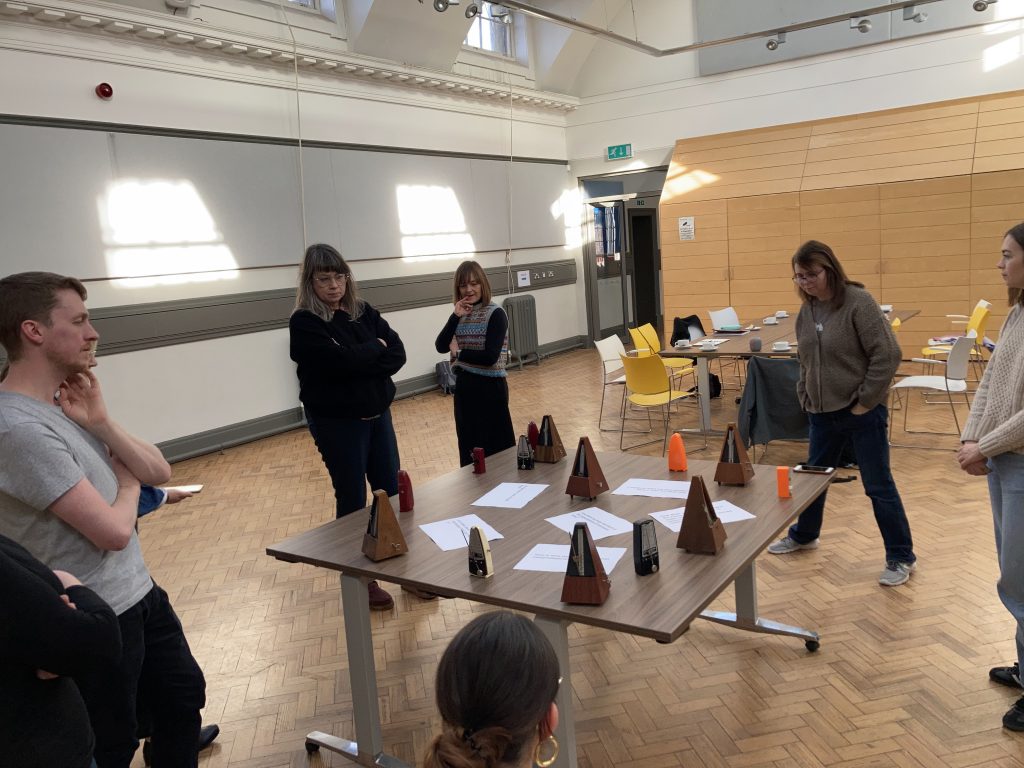

Collective Futures Session 7
Collective Futures met at the Grundy Art Gallery to view the new neon work commissioned for Hybrid Futures, RA Walden’s The Universe is a Clock (i) Schrödinger’s equation, (time dependent), 2023 and the New Contemporaries exhibition. Find out how the group considered their own understanding of time in this full report of session 7 here.
Collective Futures Session 6 – Leave No Trace
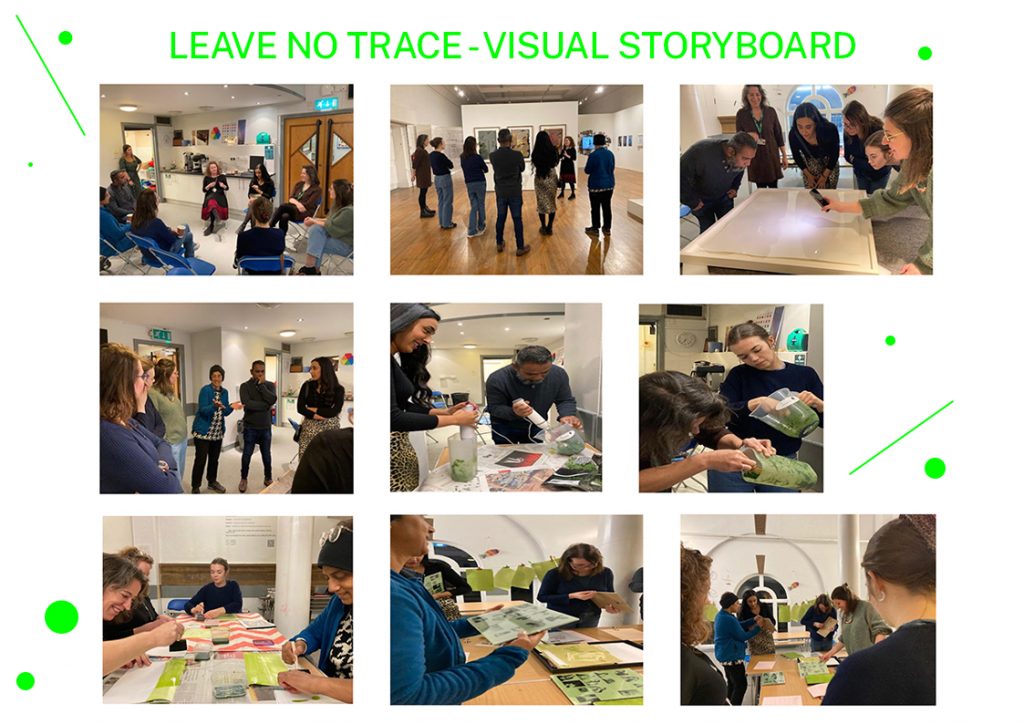
Artists are trained in mark making, printmaking, object making, film making and a multitude of ways to leave a legacy. Curators and archivists are trained in how and what to preserve of this process and cultural capital. How then can we reconcile this with ecological directives such as ‘leave no trace behind’ and ‘go zero waste’? What is sustainable making and how should we decide what is collected and valued? How can a collection or a creative practice be a vehicle for change?
To unpack these questions, photographer Gwen Riley Jones gave the collective the chance to explore sustainable photography including printing with wet spinach and take a deep dive into the University of Salford’s Art Collection to consider permanence, ephemerality and the cultural and environmental cost of creating and collecting contemporary art. The collective toured Salford Museum and Art Gallery, sharing their experiences of galleries before getting up close to interrogate three pieces of the collection and making links to place – Salford – and their sense of permanence of perspectives, bodies and materials.
Reflections were made on how the programme is iterative and how parts of earlier sessions are being internalised and embedded into the collective’s lives and workplaces beyond the reach of each session. The group left with an anthotype, to expose in sunlight, slowly at home and then note how the image fades and disappears over time. The image to expose is a montage of each member of the collective holding up their resonant objects from session three.
Collective Futures Session 6
Take a take a deep dive into the University of Salford’s Art Collection to consider permanence, ephemerality and the cultural and environmental cost of creating and collecting contemporary art with the Collective Futures cohort here.
You’re Invited: Hybrid Futures Exhibition Launch – 21st March
The latest instalment of Hybrid Futures launches at Salford Museum & Art Gallery next week. Bringing together all the work from across the Hybrid Futures project, you’re invited to join us to celebrate the exhibition launch on the 21st of March.
Exhibition Launch: Hybrid Futures
5-7 PM, Thurs 21st March 2024
Salford Museum and Art Gallery
Open to all and free to attend, refreshments provided.
RSVP here: salfordmuseum.com/event/opening-hybrid/
The exhibition brings together new work and co-commissions by Shezad Dawood, Jessica El Mal, Parham Ghalamdar and RA Walden that will mark one of the final phases of the Hybrid Futures pilot project exploring collective and more sustainable ways of working. The exhibition in Salford is presented by the University of Salford Art Collection in partnership with Salford Museum & Art Gallery. Read more about the exhibition here.
A prayer room, water and dates will be made available to anyone observing Ramadan. Want to attend earlier? We will be offering a quiet hour ahead of the exhibition launch. Please contact Rowan Pritchard if you would like to attend from 4 pm.
Planning on attending? After your visit to Hybrid Futures, don’t miss Nikta Mohammadi: Memory Stone Preview at The Lowry, also on the 21st of March from 6 until 8pm.
To travel to The Lowry from Salford Museum and Art Gallery, catch the 50 bus from the Crescent (opposite the Museum), to Media City UK. The 50 is part of The Bee Network, with easy access on all busses. For more information visit: https://tfgm.com/public-transport/bus/stops/1800NF31221/50
Collective Futures Session 5 – Regenerative Cultures
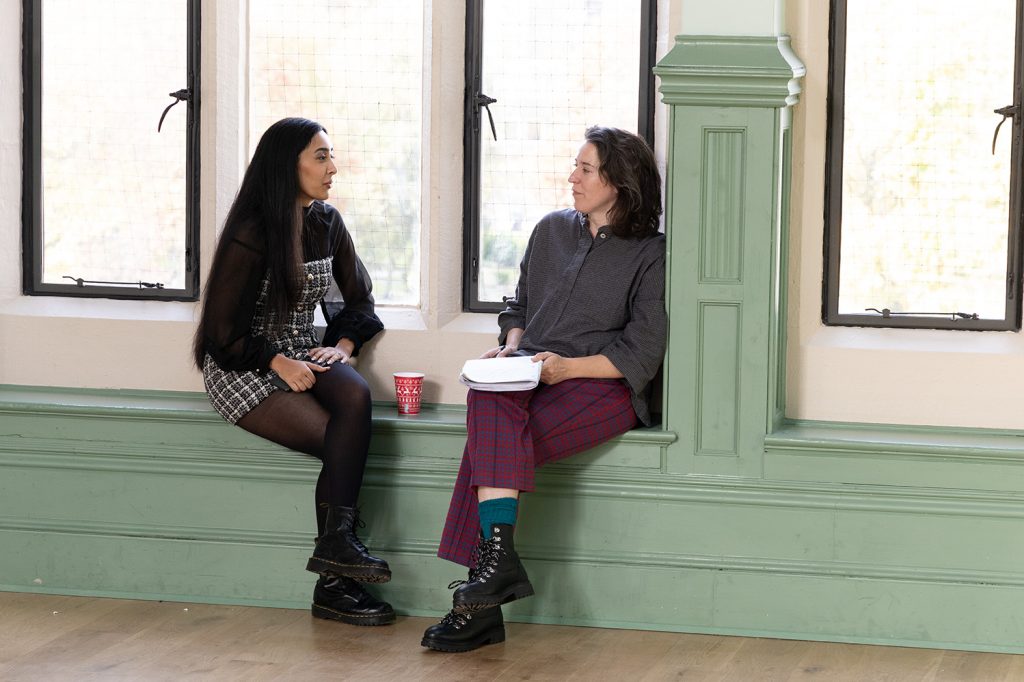
(5-minute read)
Liz Postlethwaite of Small Things Creative Projects began the Collective Futures session by asking the group what they had each noticed in nature today. In response, the collective shared their observations on the changing colour of the autumn, heavy rain and the oxygenating effect of negative ions and bacteria release, the clouds and the light over the moors.
In small groups the collective went on to explore what regenerative means to them:
- New iterations
- Momentum and energy
- Doesn’t take more than it provides
- Application to different models, organisations, system
- Connected, collaborative and co-creative
- Renewed, continued as opposed to ending of fragmented
From the sharing of a weekend activity – sweeping up autumn leaves – links were made between the body and the visceral process of regeneration, mutation and change including the menopause and searching for something in amongst the mulch. A comparison to the film Alien was drawn.
Liz expanded on these shared views, drawing attention to process, ecologies, sense of connectedness and self generation. She explained how the earth is regenerative and has been developing complex regenerative systems for 4.6 billion years and is a continuous growth or cycle of life giving process. The conversation touched on abundance, a definition of ‘we’ being bigger than the human experience and what ‘we’ need, what’s extracted is different for different people at different times.
Extractive, Sustainable, Resilient and Regenerative models.
Extractive was explained as the predominant, industrial culture which keeps taking until nothing is left in systems, exactly where we are now – with a system losing capacity over time. Sustainable provides a steady flow -a system that was not depleted but not rebuilt at the same time. Resilient – a term co-opted in contemporary culture referring to an ecosystems ability to recover from shock. Regenerative held an upwards trajectory ecosystem, building capacity, growing life to allow for a resilient system to flourish.
The collective broke off into groups to discuss how these models of practice related to our own practices. This led to a discussion of how using these words was triggering for one member of the collective who connected the concepts to mutation and regrowth in an embodied sense. This directly linked to one member of the collective working for the NHS and the extraction of care from people and the body’s ability to regenerate cells from within a health care system with a depletive and extractive culture.
Another group shared their experience of how the extraction of resources (green spaces and authoritative powers not listening to public consultation) is not ultimately beneficial to the economic models. This correlates to the pollution of the sea and subsequent depletion of tourism in Blackpool and the complex and intertwined economic / ecological systems we find ourselves navigating.
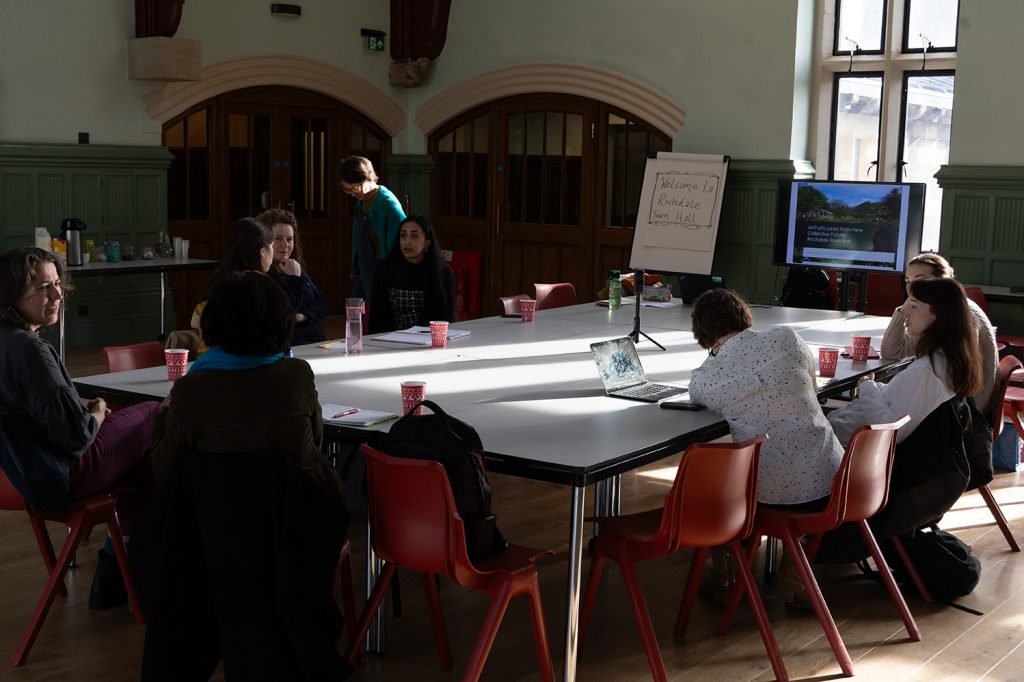
There was a light bulb moment for two members of the collective and articulation of Sustainable and Regenerative Practice and what they want to be aiming towards.
Liz talked about time and urgency and the need to slow everything down in terms of our own personal responsibility and our aspirations for change. The urgency and pressure we are under to fix the planet was spoken about as not particularly helpful and it was posited that perhaps we should be aiming to contribute to a future world we will never experience; An example given was a tree we plant today being the oldest tree in a forest we will never know. If our relation to time and timelines could be readjusted not to align ourselves with industrial models of production and consumption, we might understand our place in the ecosystem and cycle of decomposer/receptacle of biomass.
Liz began to describe the three principles of permaculture as an ethically based design system informed by indigenous cultures caring for the planet, people and a fair future. Liz spoke about the context of late capitalism and how capitalism is designed to make us feel unable to step away from it as we feel trapped in a producer/consumer mode rather than producer/consumer/decomposer model we find in natural ecosystems.
Liz spoke about the ‘impossible’ in relation to the fall of the Berlin Wall – how this once seemed unfeasible and towards imagining a future in which radical change and faith in uncertainty. One member of the Collective shared her insight on rights of species – such as sharks in the Maldives.
An activity of reflecting on our own practice as regenerative and some self-congratulation from within the group. One member noted the way in which budgets were set for artists rather than asking the artists to quote for their work as something that could change.
Liz showed the collective a wheel of privilege which visibly plotted that privilege is not a single entity and can have impact in multiple different ways.
Announcing: Hybrid Futures Symposium
Friday 10 May 2024 10.00am – 4.45pm
The Old Fire Station, University of Salford & Salford Museum and Art Gallery
What are the environmental issues currently facing museum collections, art galleries and artists?
Is it possible to make your work more sustainable in the visual arts sector?
How can arts organisations and their local communities work together to influence change?
Is there the potential to test ideas and new ways of working in order to create a robust and effective model to change the way that galleries should operate in the future?
Join the Hybrid Futures partners, artists, commissioners, funders, community members and consultants for conversation and activity as we share our learning and explore together concrete actions our sector can take to create enduring and effective models of sustainable practice for galleries and museums.
Get updates on the Hybrid Futures Symposium programme and book here: www.eventbrite.co.uk/e/hybrid-futures-making-showing-collecting-art-in-a-time-of-climate-crisis-tickets-837365973167
